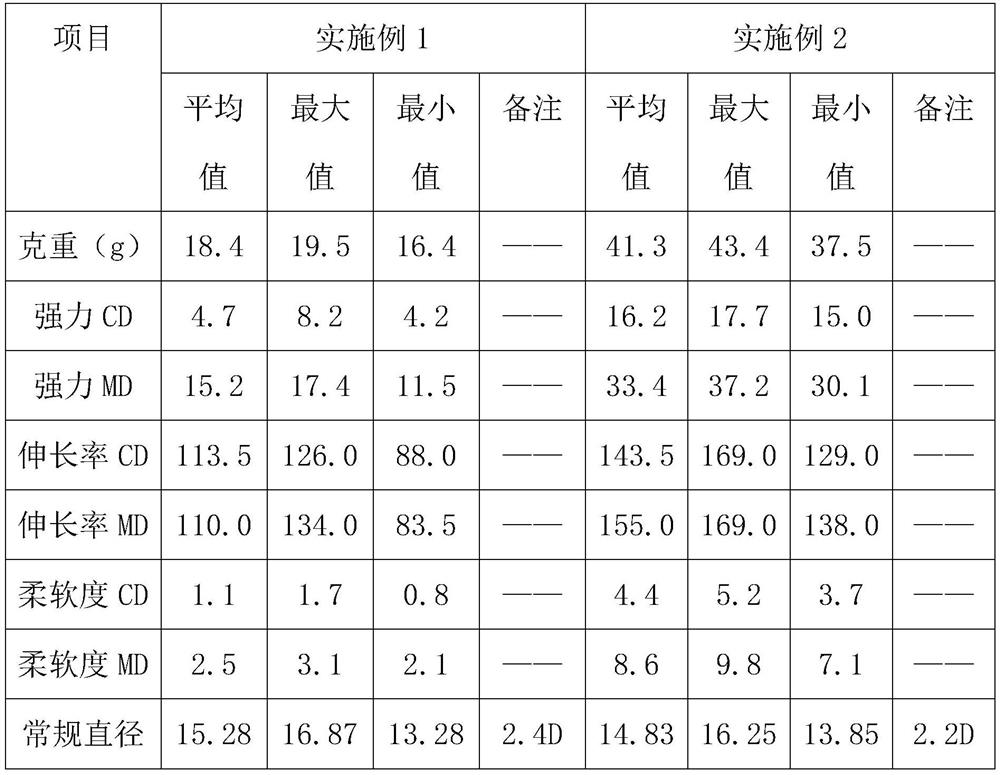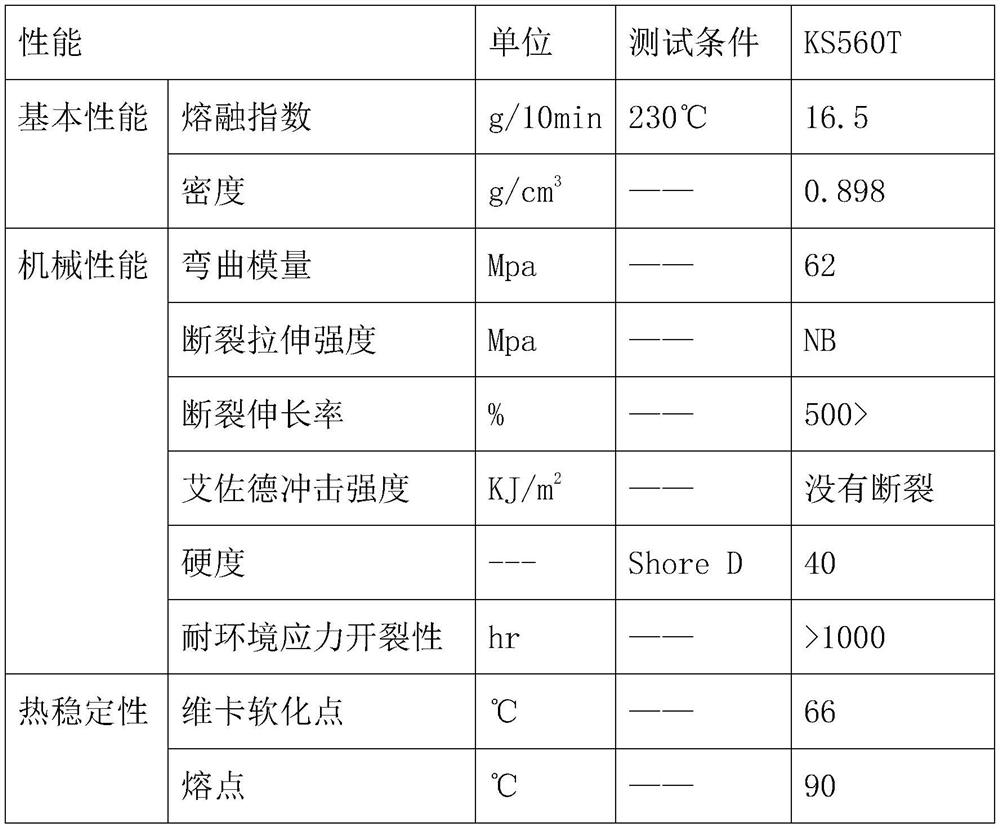Soft PE non-woven fabric applied to hygienic products and manufacturing method of soft PE non-woven fabric
A technology for hygiene products and manufacturing methods, applied in textiles, papermaking, non-woven fabrics, etc., can solve problems such as increased frictional resistance, poor spinnability, and poor composite effect.
- Summary
- Abstract
- Description
- Claims
- Application Information
AI Technical Summary
Problems solved by technology
Method used
Image
Examples
Embodiment 1
[0029] A soft PE non-woven fabric used in hygiene products, including a soft layer and a composite layer, the soft layer is made of low-melting PE raw material, the composite layer is made of PP raw material and adhesive material, the PE raw material is KS560T, the The PP raw material is H39S-2, and the binder is OMBM.
[0030] A kind of manufacturing method of the soft PE non-woven fabric that is applied to hygienic article, adopts following steps to operate:
[0031] S1. Add low-melting PE raw material KS560T into the first die head A, add conventional PP raw material H39S-2 and binder OMBM into the second die head B at a ratio of 1:1, and then mix and stir to form a slurry material;
[0032] S2. Extrude and melt the mixed and stirred slurry into the screw through the feeding system to obtain a hot melt;
[0033] S3, filtering, metering and distributing the hot melt at a certain temperature and a certain pressure;
Embodiment 2
[0049] A soft PE non-woven fabric used in hygiene products, including a soft layer and a composite layer, the soft layer is made of low-melting PE raw material, the composite layer is made of PP raw material and adhesive material, the PE raw material is KS560T, the The PP raw material is H39S-2, and the binder is OMBM.
[0050] A kind of manufacturing method of the soft PE non-woven fabric that is applied to hygienic article, adopts following steps to operate:
[0051] S1. Add low-melting PE raw material KS560T into the first die head A, add conventional PP raw material H39S-2 and binder OMBM into the second die head B at a ratio of 1:1, and then mix and stir to form a slurry material;
[0052] S2. Extrude and melt the mixed and stirred slurry into the screw through the feeding system to obtain a hot melt;
[0053] S3, filtering, metering and distributing the hot melt at a certain temperature and a certain pressure;
[0054] S4. Spinning the distributed and metered hot melt...
Embodiment 3
[0071] A soft PE non-woven fabric used in hygiene products, including a soft layer and a composite layer, the soft layer is made of low-melting PE raw material, the composite layer is made of PP raw material and adhesive material, the PE raw material is KS560T, the The PP raw material is H39S-2, and the binder is OMBM.
[0072] A kind of manufacturing method of the soft PE non-woven fabric that is applied to hygienic article, adopts following steps to operate:
[0073] S1. Add the low melting point PE raw material KS560T into the first die head, add the conventional PP raw material H39S-2 and the binder OMBM into the second die head according to the ratio of 1:1, and then make it mix and stir to form a slurry;
[0074] S2. Extrude and melt the mixed and stirred slurry into the screw through the feeding system to obtain a hot melt;
[0075] S3, filtering, metering and distributing the hot melt at a certain temperature and a certain pressure;
[0076] S4. Spinning the distribu...
PUM
 Login to View More
Login to View More Abstract
Description
Claims
Application Information
 Login to View More
Login to View More - R&D
- Intellectual Property
- Life Sciences
- Materials
- Tech Scout
- Unparalleled Data Quality
- Higher Quality Content
- 60% Fewer Hallucinations
Browse by: Latest US Patents, China's latest patents, Technical Efficacy Thesaurus, Application Domain, Technology Topic, Popular Technical Reports.
© 2025 PatSnap. All rights reserved.Legal|Privacy policy|Modern Slavery Act Transparency Statement|Sitemap|About US| Contact US: help@patsnap.com



